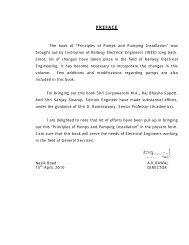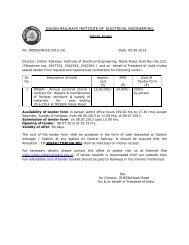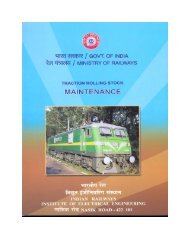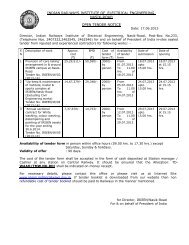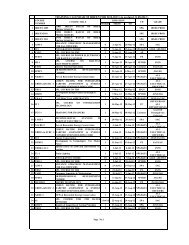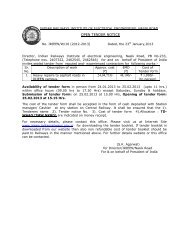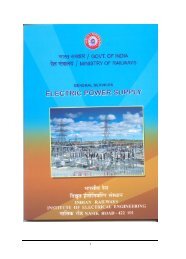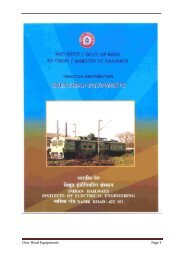remote control equipment - Indian Railways Institute of Electrical ...
remote control equipment - Indian Railways Institute of Electrical ...
remote control equipment - Indian Railways Institute of Electrical ...
You also want an ePaper? Increase the reach of your titles
YUMPU automatically turns print PDFs into web optimized ePapers that Google loves.
c) Inter-turn short, inter-layer short, or inter-coils short – the same signs<br />
as for indicated for sustained over load would be noticed, but only on<br />
affected coils, the rest <strong>of</strong> the coils being intact. This is likely if the<br />
differential relay or the Buchholz relay has operated.<br />
d) Dead short-circuit – this can be identified by the unmistakable, lateral<br />
or axial displacement <strong>of</strong> the coils. The coils may be loose on the core,<br />
some turns on the outermost layer may have burst outwards and<br />
broken as if under tension. If, in addition to these signs, the windings<br />
are also completely charred it is conclusive evidence that the short<br />
circuit has continued for an appreciable period, not having been<br />
cleared quickly by the protective relays.<br />
e) If the upper chamber <strong>of</strong> the Buchholz relay alone has tripped, check<br />
the insulation <strong>of</strong> core bolts, by applying a voltage <strong>of</strong> 230 V to 1000 V<br />
between the core and each bolt. If it fails, renew the insulating bush.<br />
Observe also all the joints, and tap-changer contacts, for over-heating<br />
and arching.<br />
f) If the oil shows a low BDV, it does not necessarily mean that it has<br />
caused the breakdown. At high voltage ratings, excessive moisture<br />
content in the oil may result an internal flashover between the live parts<br />
and earth, which will leave corresponding tell-tale marks.<br />
3.3.3. Circuit Breakers and Interrupters<br />
The following types <strong>of</strong> circuit breakers and interrupters are now in use:<br />
Circuit Breakers<br />
a) 220/132/110/66 kV, Double pole: -- SF6 type<br />
b) 25 kV Single Pole -- SF6 type<br />
-- Vacuum type<br />
c) Interrupters -- SF6<br />
-- Vacuum type<br />
Oil type circuit breakers/interrupters where used in earlier projects and require<br />
considerable attention for maintaining satisfactory condition <strong>of</strong> the oil. In case <strong>of</strong><br />
minimum oil type <strong>equipment</strong>s frequent replacement <strong>of</strong> oil is necessary on account <strong>of</strong><br />
service conditions. To overcome these limitations, SF6 type circuit breakers and<br />
interrupters are now standardized.<br />
Manufacturer’s detailed instructions may be referred to for installation<br />
commissioning, operation and maintenance for all types <strong>of</strong> breakers/interrupters.<br />
RDSO’s additional instructions on maintenance and modifications to the circuit<br />
27






